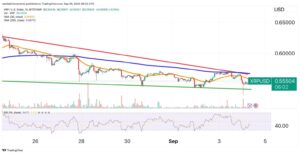Last updated:
 Why Trust Cryptonews
Why Trust Cryptonews

German technology conglomerate Siemens has issued its second digital bond, valued at €300 million, utilizing the SWIAT permissioned blockchain.
The one-year bond saw settlement completed in just minutes, using Germany’s Trigger solution, which automates central bank payments through the TARGET 2 system.
This rapid settlement stands in stark contrast to Siemens’ previous €60 million bond issued on the Polygon blockchain, which required a two-day settlement, the company said in a recent press release.
The issuance is part of the European Central Bank’s (ECB) trials on wholesale Distributed Ledger Technology (DLT) settlement.
“By issuing another digital bond, we are demonstrating once again our spirit of innovation and underscoring our aim to continuously drive digital solutions for the financial markets,” Ralf P. Thomas, chief financial officer of Siemens, said.
Largest eWpG Bond to Date
Classified as a crypto security under Germany’s Electronic Securities Act (eWpG), the bond marks the largest eWpG bond issued to date.
By June 2024, the total eWpG digital securities issuances were estimated at €236 million, a figure that has grown thanks to the ECB’s trials. Since then, government-owned bank KfW has issued €150 million across two digital bond offerings.
While often described as bearer bonds, eWpG digital bonds still require a registrar to track asset holders.
In this case, DekaBank, one of the investors, serves as the bond registrar.
Other key investors included BayernLB, DZ BANK, Helaba, and LBBW, with Deutsche Bank handling settlement using the Bundesbank Trigger Solution.
“Automated processing within a few minutes shows the enormous potential of this new technology and confirms our strategy of playing a leading role in continuously shaping the digital transformation,” Peter Rathgeb, Corporate Treasurer at Siemens AG, said.
Tokenized Asset Market Could Reach $1.3T by 2030
Some in the crypto community have cast doubt on a recent projection suggesting that tokenized real-world assets (RWAs) could reach a staggering $30 trillion by 2030.
Among the critics is Jamie Coutts, chief crypto analyst at Real Vision, who believes that a more realistic valuation is closer to $1.3 trillion.
Coutts pointed out that if the current compound annual growth rate (CAGR) of 121% for tokenized assets continues, the market could indeed reach $1.3 trillion by 2030.
Coutts’ cautious outlook is echoed by other industry experts.
McKinsey & Company recently reported that tokenized financial assets have had a “cold start” but are still expected to grow to a $2 trillion market by 2030.
Meanwhile, a report by the Global Financial Markets Association (GFMA) and Boston Consulting Group estimates the global value of tokenized illiquid assets will reach $16 trillion by 2030.
Even more conservative estimates from Citigroup suggest that $4 trillion to $5 trillion worth of tokenized digital securities could be minted by 2030.
Recognizing this potential, major companies are making significant moves in the tokenization space.
Goldman Sachs, for instance, plans to launch three new tokenization products later this year, driven by growing client interest.


















